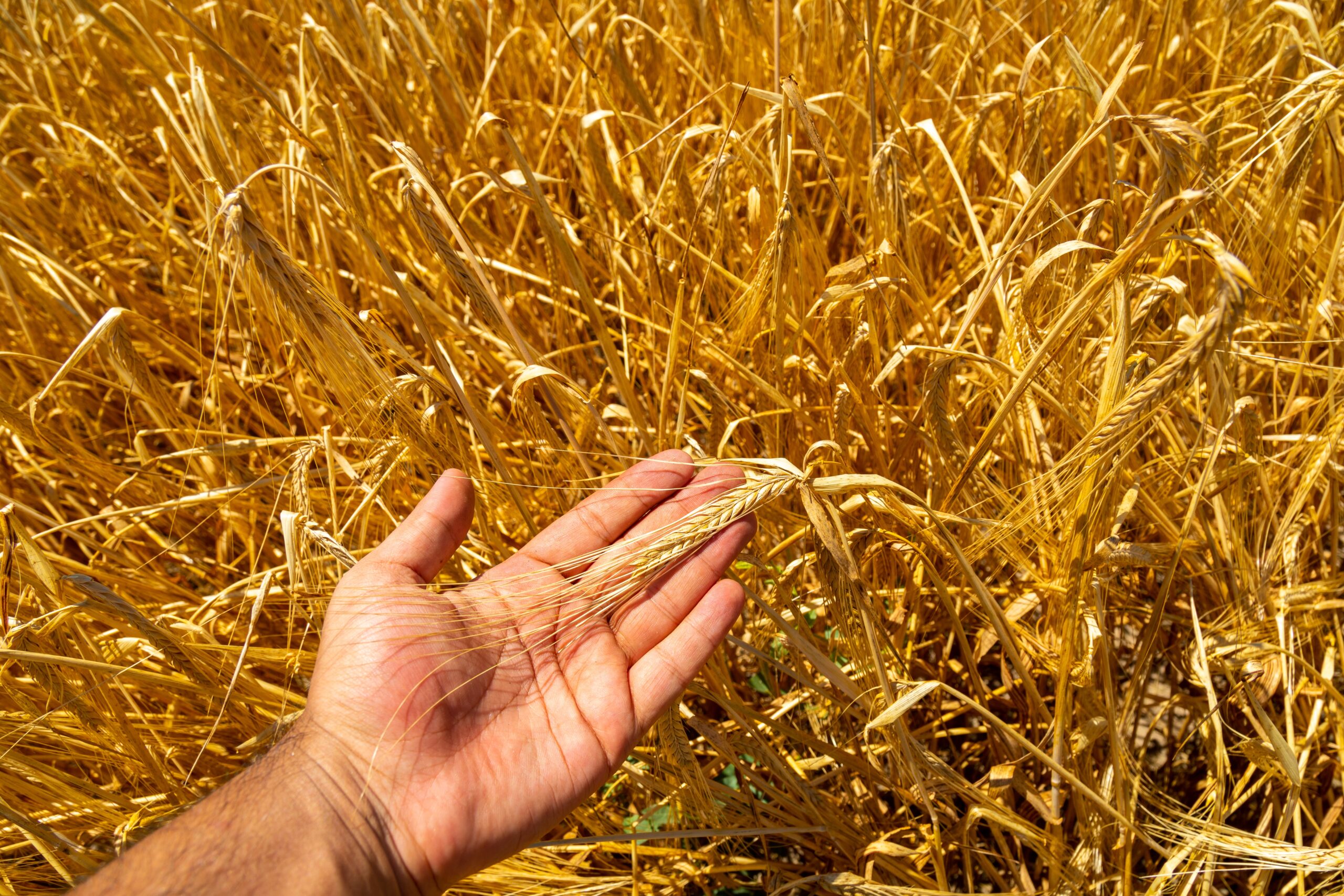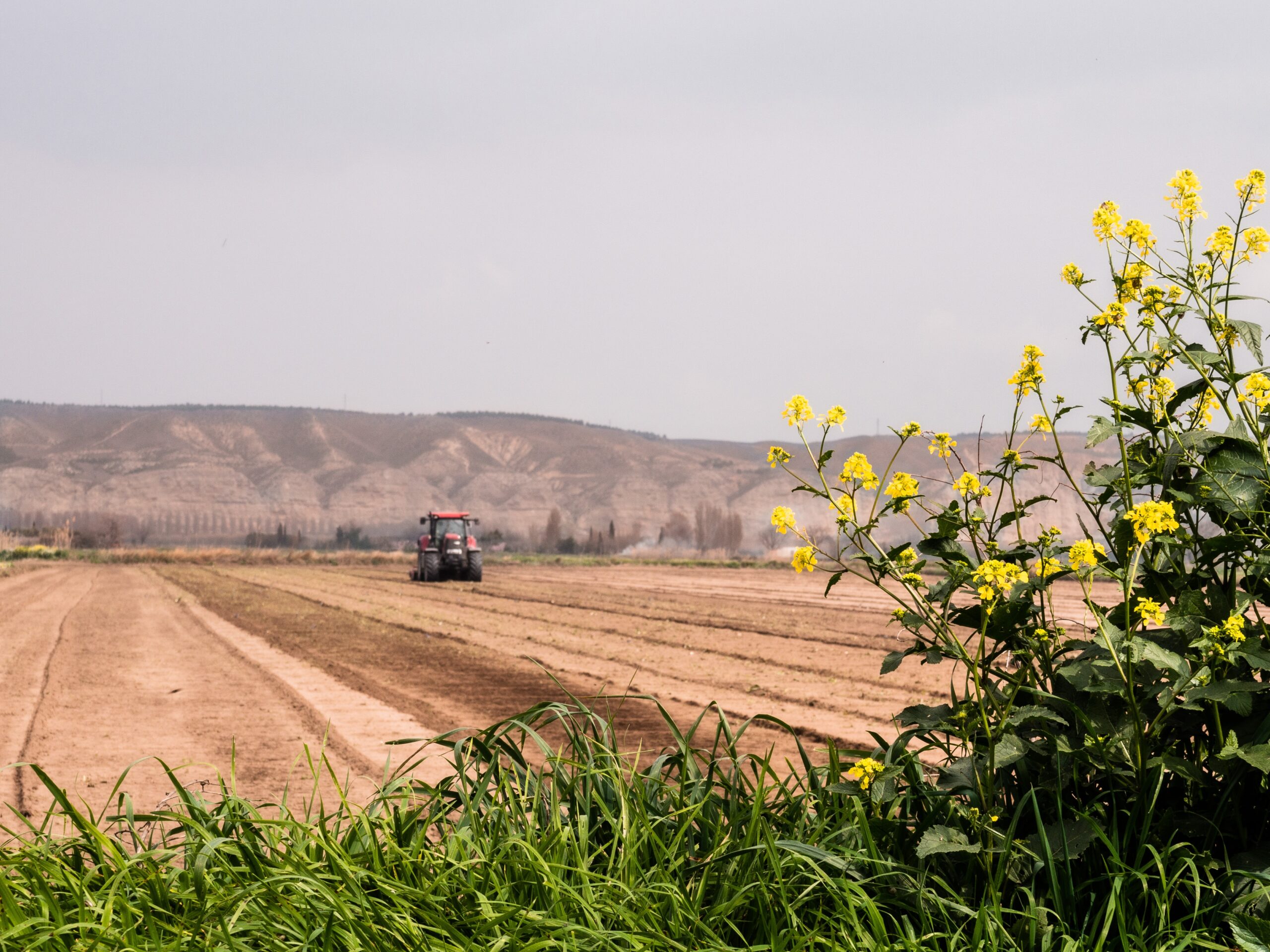
In today’s rapidly advancing world, the integration of robotics and artificial intelligence (AI) is transforming traditional farming and revolutionizing crop management. With the help of sophisticated robots and AI algorithms, farmers are now able to optimize their operations, enhance productivity, and ensure sustainable agricultural practices. This article will explore how robotics and AI are reshaping the agricultural landscape, highlighting the significant advancements in precision farming, automated harvesting, and crop monitoring. Discover how these cutting-edge technologies are empowering farmers to overcome challenges, increase efficiency, and ultimately contribute to a more sustainable and food-secure future.
Benefits of Robotics and AI in Agriculture
Increased Efficiency and Productivity
The introduction of robotics and AI in agriculture has brought about a significant increase in efficiency and productivity. With the help of automation and advanced algorithms, tasks that used to take hours or even days can now be completed in a matter of minutes. For example, automated planting and harvesting systems have revolutionized the industry by reducing time and effort required for these labor-intensive tasks. This increased efficiency ultimately leads to higher productivity and allows farmers to achieve more in less time.
Reduced Labor Costs
One of the most notable benefits of robotics and AI in agriculture is the reduced labor costs. With the use of autonomous robots and drones, farmers can significantly reduce their reliance on manual labor. These machines can perform tasks such as planting, harvesting, and weed and pest control with minimal human intervention. This not only saves on labor costs but also eliminates the need for manual labor in physically demanding and repetitive tasks. By leveraging robotics and AI, farmers can optimize their workforce and allocate human resources to more complex and higher-value tasks.
Improved Precision and Accuracy
Precision and accuracy are crucial in agriculture, as even the smallest error can have a significant impact on crop yield and quality. Robotics and AI technologies have enabled farmers to achieve a level of precision that was previously unimaginable. For instance, automated systems equipped with sensors and cameras can analyze crop growth and health in real-time, allowing farmers to make data-driven decisions for optimal crop management. This level of precision ensures that resources such as water, fertilizer, and pesticides are used efficiently, minimizing waste and environmental impact.
Enhanced Crop Monitoring and Management
Crop monitoring and management have always been fundamental aspects of successful farming. However, robotics and AI have taken these tasks to a whole new level. Through the use of drones and autonomous robots, farmers can monitor their crops from a bird’s-eye view, capturing valuable data and insights. These devices can collect data on soil moisture levels, plant health, and pest infestations, enabling farmers to detect issues early on and take remedial actions promptly. Additionally, AI-powered algorithms can analyze this data to provide accurate predictions and recommendations, further enhancing crop management practices.
Applications of Robotics and AI in Agriculture
Automated Planting and Harvesting
Automated planting and harvesting systems have revolutionized the agriculture industry. By utilizing autonomous robots, farmers can now efficiently sow seeds and harvest crops without requiring manual labor. These robots are equipped with advanced sensors and algorithms that enable them to detect and navigate around obstacles, ensuring accurate planting and harvesting. This application of robotics not only saves time and labor but also ensures uniformity in planting and harvesting, leading to higher crop quality.
Weed and Pest Control
Weeds and pests are a significant threat to crop health and yield. Manual weed and pest control can be time-consuming and often ineffective, especially on large-scale farms. However, robotics and AI offer innovative solutions in this regard. For example, autonomous robots equipped with computer vision technology can identify and target weeds, delivering precise herbicide application only where needed. Similarly, drones equipped with thermal imaging cameras can detect pest infestations early on, allowing farmers to take immediate action. These advancements in weed and pest control not only increase crop yield but also reduce the reliance on chemical pesticides, resulting in more sustainable farming practices.
Crop Monitoring and Management
Crop monitoring and management play a crucial role in optimizing crop growth and resource allocation. Traditional methods of monitoring crops involve manual inspections, which can be time-consuming and often prone to human error. However, with the introduction of robotics and AI, crop monitoring has become more efficient and accurate. Drones equipped with high-resolution cameras can capture detailed images of crops, allowing farmers to analyze plant health, growth patterns, and nutrient deficiencies. Additionally, autonomous robots equipped with sensors can monitor soil moisture, temperature, and nutrient levels, providing farmers with real-time data for precise irrigation and fertilization. These technological advancements enable farmers to take proactive measures to ensure optimal crop growth and maximize yield.
Soil Analysis and Nutrient Management
Soil analysis and nutrient management are essential aspects of efficient farming. By analyzing soil composition and nutrient levels, farmers can optimize fertilizer application and ensure the health and productivity of their crops. Robotics and AI have played a significant role in simplifying and enhancing these tasks. Autonomous robots equipped with specialized sensors can collect soil samples, measure nutrient levels, and analyze soil fertility. This data is then used to generate recommendations for precise fertilizer application, eliminating waste and reducing the environmental impact. By leveraging robotics and AI in soil analysis and nutrient management, farmers can ensure the optimal health and yield of their crops while minimizing costs and environmental harm.

Robotic Technologies in Agriculture
Autonomous Robots
Autonomous robots are at the forefront of robotics technology in agriculture. These robots are capable of performing tasks with little or no human intervention, making them highly efficient and cost-effective. Powered by advanced sensors, algorithms, and actuators, autonomous robots can navigate complex terrains, detect and avoid obstacles, and perform a wide range of agricultural tasks such as planting, harvesting, and crop monitoring. These robots not only save time and labor but also ensure precision and accuracy in agricultural operations.
Drones
Drones, also known as unmanned aerial vehicles (UAVs), have become increasingly popular in agriculture. Equipped with high-resolution cameras, thermal imaging sensors, and multispectral scanners, drones offer a bird’s-eye view of crops, allowing farmers to monitor plant health, detect pest infestations, and assess overall crop condition. Drones can cover large areas quickly and capture detailed data that can be analyzed and used for informed decision-making. Their agility and versatility make them an indispensable tool in modern precision agriculture.
Sensors and Cameras
Sensors and cameras are integral components of robotic technologies in agriculture. These devices collect data on various environmental factors such as soil moisture, temperature, and nutrient levels. By measuring these parameters, farmers can make data-driven decisions regarding irrigation, fertilization, and crop management. Additionally, cameras equipped with computer vision technology can capture detailed images of crops, enabling analysis of plant health, growth patterns, and pest infestations. The data collected by sensors and cameras is then processed and analyzed by AI algorithms, providing farmers with valuable insights and recommendations for optimal crop management.
Robotics for Harvesting
Harvesting crops is a labor-intensive and time-sensitive task. Robotics technology has made significant advancements in this area, with the development of robotic systems capable of harvesting a wide range of crops. These robots use specialized sensors and grippers to identify and selectively harvest ripe fruits or vegetables, ensuring minimal damage and maximum efficiency. Robotic harvesting not only reduces labor costs but also eliminates the physical strain on human workers, improving the overall efficiency and quality of crop harvesting.
AI in Agriculture
Machine Learning
Machine learning plays a vital role in the advancement of AI in agriculture. Through machine learning algorithms, computers can analyze vast amounts of agricultural data and learn patterns and relationships. This enables AI systems to make predictions and recommendations based on historical data, making them valuable tools for decision-making in agriculture. Machine learning algorithms can be used to analyze data from sensors, cameras, and drones to detect patterns in crop health, predict yield, and identify potential issues. By continuously learning from new data, machine learning algorithms become increasingly accurate and valuable in improving crop management practices.
Computer Vision
Computer vision is another essential aspect of AI in agriculture. By leveraging computer vision algorithms, AI systems can analyze images and videos captured by cameras or drones and extract valuable information. For example, computer vision can be used to analyze images of crops and identify patterns of plant health, detect diseases or pests, and assess crop maturity. Computer vision in agriculture enables farmers to monitor and manage their crops more effectively, detect issues early on, and make informed decisions based on visual data.
Data Analytics and Predictive Modeling
Data analytics and predictive modeling are crucial components of AI in agriculture. By analyzing vast amounts of agricultural data, AI systems can generate accurate predictions and models. These predictions can include yield estimations, optimal irrigation and fertilization schedules, and pest and disease outbreak warnings. By using data analytics and predictive modeling, farmers can make informed decisions, optimize resource allocation, and improve overall crop management practices. This data-driven approach leads to more efficient and sustainable farming, ensuring the long-term success and profitability of agricultural operations.

Challenges and Limitations of Robotics and AI in Agriculture
High Initial Costs
One of the primary challenges of adopting robotics and AI in agriculture is the high initial costs. Implementing robotics and AI technologies often requires significant investments in hardware, software, and infrastructure. While the long-term benefits may outweigh the costs, small-scale farmers and those operating on tight budgets may find it challenging to afford these technologies. However, as the demand for robotics and AI in agriculture continues to grow, it is expected that the costs will decrease, making these technologies more accessible to a wider range of farmers.
Lack of Adaptability to Complex Environments
A limitation of current robotics and AI technologies in agriculture is their lack of adaptability to complex and dynamic environments. Agricultural fields are diverse, and no two farms are the same. Robots and AI systems must be capable of adapting to various soil types, terrains, and crop types. Additionally, unpredictable weather conditions and changing environmental factors pose challenges to these technologies. Further advancements are necessary to ensure that robotics and AI can effectively operate in complex and ever-changing agricultural environments.
Ethical Concerns
The use of robotics and AI in agriculture also raises ethical concerns, particularly related to the treatment of animals and the impact on human labor. As robotics technology advances, there is a possibility of replacing human labor in various agricultural tasks, leading to job displacement. Additionally, the use of AI in livestock management raises questions about animal welfare and the ethical treatment of animals. Addressing these ethical concerns is crucial to ensure that the adoption of robotics and AI in agriculture is ethical and sustainable.
Data Security and Privacy Issues
Collecting and analyzing large amounts of data in agriculture brings about data security and privacy concerns. Farmers need to ensure that the data collected from their fields, such as crop health, soil composition, and weather patterns, is protected from unauthorized access and potential misuse. Additionally, the use of AI algorithms relies on data sharing and collaboration, which may raise concerns about data privacy and ownership. Farmers must be aware of these issues and implement appropriate data security measures to protect their confidential and sensitive information.
Case Studies on Robotics and AI in Agriculture
Rowbot System by Bosch Deepfield Robotics
The Rowbot system developed by Bosch Deepfield Robotics is an example of how robotics and AI are transforming agriculture. This autonomous robot is designed to navigate fields and provide targeted, on-demand fertilization. Equipped with sensors and AI algorithms, the Rowbot can analyze soil composition and nutrient levels, and apply fertilizer precisely where needed, effectively reducing fertilizer usage and optimizing crop health. The Rowbot system demonstrates the potential of robotics and AI in improving resource efficiency and sustainable farming practices.
Blue River Technology’s See & Spray
Blue River Technology’s See & Spray system is an AI-powered solution for precision herbicide application. This system uses computer vision technology to identify and target weeds, delivering precise herbicide sprays only where needed. By accurately targeting weeds, the See & Spray system reduces the amount of herbicides used, minimizes environmental impact, and increases crop yield. This case study highlights how AI and computer vision are revolutionizing weed control in agriculture, leading to more sustainable and cost-effective farming practices.
Hands Free Hectare Project in the UK
The Hands Free Hectare project in the UK is an ambitious initiative that showcases the potential of robotics and AI in agriculture. In this project, a team of researchers successfully grew and harvested a crop of barley without any human intervention. Autonomous machinery performed all tasks, including soil preparation, planting, crop monitoring, and harvesting. The project demonstrated the feasibility of using robotics and AI to automate the entire crop production process, with potential applications in large-scale farming and addressing labor shortages.
Harvest CROO Robotics’ Strawberry Picking Robot
Harvest CROO Robotics has developed a robotic system for strawberry picking, addressing the labor-intensive and physically demanding task. The robot uses computer vision and robotic arms to identify and gently pick ripe strawberries. This technology not only reduces labor costs but also ensures the quality and efficiency of strawberry harvesting. The strawberry picking robot exemplifies how robotics and AI can enhance productivity and solve labor challenges in agriculture, leading to increased profitability for farmers.

Future Trends and Possibilities
Integration of Robotics and AI with IoT
The integration of robotics and AI with the Internet of Things (IoT) is an emerging trend in agriculture. By connecting robots, drones, sensors, and AI systems to the internet, farmers can gather and analyze real-time data from their fields. This integration enables intelligent decision-making, automation of tasks, and remote monitoring of crop growth and resource usage. The combination of robotics, AI, and IoT has the potential to revolutionize farming practices by providing farmers with unprecedented insights and control over their operations.
Biological and Chemical Sensing
Advancements in biological and chemical sensing technologies offer exciting possibilities for robotics and AI in agriculture. By developing sensors that can detect and analyze various biological and chemical factors in the field, farmers can gain valuable insights into crop health, nutrient levels, and pest infestations. These sensors, when combined with AI algorithms, enable precise and proactive management practices, optimizing resource allocation and minimizing waste. Biological and chemical sensing technology has the potential to revolutionize crop management and contribute to sustainable and efficient farming practices.
Robot Swarms for Large-Scale Farming
Robot swarms, where multiple robots work collaboratively to complete tasks, are an area of research with significant potential in large-scale farming. These swarms can perform tasks such as planting, harvesting, and crop monitoring simultaneously, greatly increasing efficiency and reducing labor costs. By leveraging the power of robotics and AI, farmers can scale up their operations without sacrificing productivity. Robot swarms enable rapid and synchronized actions, ensuring timely completion of tasks and improving overall farm management.
Robotics for Livestock Management
While most discussions on robotics and AI in agriculture focus on crop farming, there is also a significant potential for these technologies in livestock management. Robotics can be used to automate tasks such as feeding, milking, and waste management, improving the efficiency and well-being of livestock. AI-powered systems can analyze data from sensors attached to animals, detecting health issues, and ensuring timely interventions. The use of robotics and AI in livestock management has the potential to revolutionize the industry, improving animal welfare and increasing operational efficiency.
Conclusion
Robotics and AI have revolutionized the agricultural industry by increasing efficiency, reducing labor costs, and improving precision and accuracy. From automated planting and harvesting to advanced crop monitoring and soil analysis, these technologies have enabled farmers to optimize their operations and achieve higher productivity. However, challenges such as high initial costs, adaptability to complex environments, ethical concerns, and data security issues must be addressed to ensure the sustainable and responsible adoption of robotics and AI in agriculture. As technology continues to advance, the future of agriculture looks promising, with possibilities such as integration with IoT, biological and chemical sensing, robot swarms, and robotics for livestock management. By embracing these technologies, farmers can maximize their yield, optimize resource usage, and contribute to a more sustainable and efficient agricultural industry.








